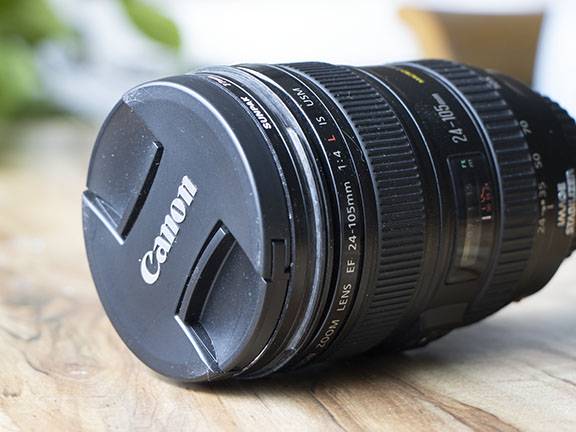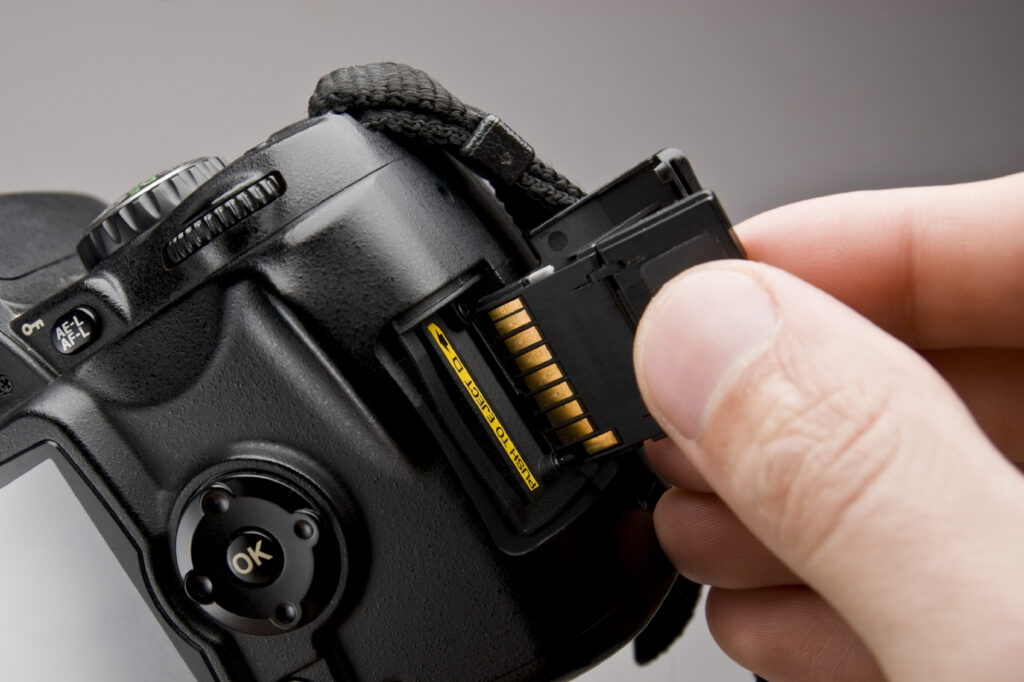Verify that the battery is completely charged. Make sure the lens is securely fastened by checking. Never use the Self-Timer setting in Drive Mode. It must be recharged before taking another picture while the built-in flash is in use.

Most likely, if you’re reading this, you’re upset because your favorite Canon camera isn’t catching those perfect moments. We’ve got you covered, so don’t worry! In this troubleshooting article, we’ll go through a few typical problems that can cause your camera to malfunction. Let’s get started and revive your Canon!
Table of Contents
1. Check the Battery

Is Your Camera Running on Empty?
Make sure your camera has enough power to function before we start to worry. The first thing to check if your Canon camera isn’t shooting images is the battery. Sometimes, a seemingly complicated issue may result from a low battery.
Solution
Check Charge: Make sure your battery is fully charged. Before using the camera, fully recharge it if it’s low.
Proper Insertion: Make sure the camera’s battery is installed correctly. Power problems can occasionally result from improper insertion.
Battery Replacement: If your battery is old and has been used extensively, it might have reached the end of its life span. Consider getting a new battery to ensure optimal performance.
2. Memory Card Woes

A faulty or full memory card can also cause your Canon camera to stop taking pictures. This is a common issue, especially if you take many photos and must remember to manage your storage space.
Solution
Check Storage: Double-check the available space on your memory card. If it’s running out of space, transfer your cherished memories to your computer or an external storage device to free up room.
Format the Card: If your memory card has become corrupted or is acting up, try formatting it within the camera’s settings. Be aware that formatting will erase all data on the card, so ensure you’ve backed up your photos first.
3. Lens Cap Dilemma

It happens to the best of us – caught up in the excitement of capturing a moment, and we forget to remove the lens cap. This simple oversight can prevent your camera from taking pictures.
Solution
Remove the Lens Cap: Check if it is still on and remove it before taking photos. It’s an easy fix that many overlook in the heat of the moment.
Lens Hood Check: If you use a lens hood for added protection, ensure it’s not blocking the view. Improperly positioned lens hoods can obstruct the lens, resulting in dark or unclear images.
Related issues guide: Canon camera screen not working (how to solve)
4. Autofocus Issues

Blurry images can be incredibly frustrating, but the cause might be related to your camera’s autofocus system. It could be acting up, causing difficulties in getting a sharp focus.
Solution
Switch to Manual Focus: Try switching to manual focus mode and see if you can achieve better results. This can bypass any issues with the autofocus system.
Clear Obstructions: Ensure no obstructions, such as fingerprints or dirt, on the lens or the autofocus sensor that may interfere with focusing.
5. Error Messages

Seeing an error message on your camera’s screen can be perplexing. Don’t worry; your camera is just trying to communicate an issue it’s experiencing. Each error code corresponds to a specific problem; understanding it is the first step toward finding a solution.
Solution
Refer to the User Manual: Your camera’s user manual is valuable. Look up the error code in the manual; it usually contains a list of error messages and their explanations.
Canon’s Website: If the user manual needs to provide more information, visit Canon’s official website. They often have a comprehensive list of error codes with detailed troubleshooting instructions.
For better understanding, I have included a YouTube link that provides visual demonstrations or step-by-step guides to help you overcome the Canon camera not taking pictures issues.
6. Firmware Update
Outdated firmware can lead to compatibility problems and glitches in your camera’s performance. Keeping the firmware up to date is crucial for optimal functionality.
Solution
Check Canon’s Website: Visit Canon’s official website and navigate to the support section. Look for firmware updates related to your camera model.
Follow Instructions: Download the firmware update and carefully follow the instructions to install it on your camera. Make sure your camera’s battery is fully charged during the update process.
7. Reset to Factory Settings

A factory reset might do the trick if you’re still facing issues after trying various solutions. Resetting your camera to its default settings can fix software-related glitches.
Solution
Backup Your Data: Before a factory reset, backup all your settings and photos to a computer or external storage device.
Perform Factory Reset: Locate the option for a factory reset in your camera’s settings menu. Confirm the action, and your camera will return to its original settings.
8. Dirty Image Sensor

A dirty image sensor can cause unwanted spots in your photos, negatively impacting image quality. Cleaning the sensor is essential for maintaining clear and beautiful images.
Solution
Sensor Cleaning Kit: Invest in a sensor cleaning kit designed for your Canon camera model. These kits usually include tools to safely and gently remove dust or debris from the sensor.
Follow Instructions: Carefully follow the instructions provided with the cleaning kit. If you need more clarification about cleaning the sensor, consider cleaning it professionally.
9. Shutter Release Button

The shutter release button is one of your camera’s most frequently used parts. Over time, constant use can wear it down, resulting in unresponsiveness.
Solution
Press Multiple Times: If the shutter release button feels stuck or unresponsive, try pressing it multiple times gently. Sometimes, this can help dislodge any debris or make it responsive again.
Professional Inspection: If the issue persists, have your camera examined by an experienced technician. They can assess the condition of the shutter button and perform any necessary repairs.
10. Overheating Issues

Extended use or shooting in hot weather conditions can cause your camera to overheat. When this happens, certain functions, including picture-taking, may be temporarily disabled.
Solution
Take a Break: If your camera is getting hot, stop shooting and give it time to cool down. Find a shaded or cooler area and wait until it returns to a safe operating temperature.
Avoid Blocking Vents: Ensure you don’t cover any vents or openings on the camera while using it. Good ventilation helps dissipate heat effectively.
I’ve included a link to a USA Canon community where you can take advantage of the many users’ discussions. Explore the discussions at your convenience and use the helpful knowledge the community has shared.
11. Dirty Lens Contacts

The metal contacts on both the lens and the camera can accumulate dirt or oil over time. This buildup can disrupt communication between the two, leading to problems with focusing and other functions.
Solution
Gentle Cleaning: To improve connectivity, use a soft, lint-free cloth to gently clean the metal contacts on the lens and the camera. Be careful not to apply too much pressure, as the contacts are delicate.
12. Faulty Memory Card Slot

Does Your Camera Struggle to Read the Card?
The memory card slot is a crucial part of your camera’s operation. If it becomes damaged or bent, your camera may have trouble reading the memory card.
Solution
Inspect Carefully: Take a close look at the memory card slot. It’s best to refrain from forcing the memory card in if you notice any visible damage or irregularities. Seek professional repair to prevent further damage.
13. Shooting Mode Settings

Is Your Camera in the Right Mode?
Your camera offers various shooting modes, each suited for different scenarios. Sometimes, if your camera is in a specialized mode or a setting that doesn’t allow picture-taking, it may appear that it isn’t working.
Solution
Check Shooting Mode: Review the shooting mode settings on your camera. A mode that permits capturing images, such as “Auto” or “Program,” should be selected. Before taking a picture, some modes, such as “Self-timer” or “Bulb,” may have particular specifications.
Check Lenses problem: Do All Canon Lenses Fit All Canon Cameras?
14. Camera Physically Damaged

Cameras are not immune to physical damage from accidents. Your camera may display several faults if it has been dropped or hit.
Solution
Thorough Inspection: Check your camera for any physical signs of harm, such as cracks, dents, or missing parts. Additionally, look for water exposure, which might harm your inside organs.
Qualified Technician: It’s crucial to have your camera evaluated and fixed by a trained technician if you discover any damage or suspect water exposure. They possess the knowledge necessary to solve the problem successfully.
15. Technical Support
Feel free to contact Canon’s technical help if all else fails. They are available to help you with any problems and offer knowledgeable counsel.
Frequently Asked Questions
Q1: Can I use third-party batteries in my Canon camera?
Although sure batteries from third parties are good, Canon advises using authentic Canon batteries for the best performance and security.
Q2: How often should I clean my camera’s image sensor?
Cleaning the image sensor on your camera is a good idea once every few months or more regularly if you frequently switch lenses or take pictures in dusty conditions.
Q3: After trying all the solutions, my camera still needs to take pictures. What should I do?
It’s advisable to contact Canon’s technical support or go to an authorized service location for help if you’ve tried all other troubleshooting techniques.
Q4: Can I update my camera’s firmware using a smartphone?
No, a computer should be used to update the firmware. For instructions and a list of compatible operating systems, visit the Canon website.
Q5: How can I prevent my camera from overheating during extended use?
To avoid overheating, attempt to shoot in cooler settings or take rests in between long shooting sessions. Avoid covering the camera when using it to allow heat to escape.
Conclusion
No need to freak out if your Canon camera won’t take images. You can find and fix typical problems impacting the performance of your camera by following the troubleshooting procedures described in this article.
You may return to effortlessly snapping photos of precious moments by using these fixes, which range from checking the battery and memory card to cleaning the lens contacts and sensor. Always treat your camera gently; if you have any hardware or technological issues, don’t hesitate to ask an expert for help.
REFERENCES
- https://community.usa.canon.com/t5/EOS-DSLR-Mirrorless-Cameras/Camera-won-t-take-picture/td-p/34477
- https://www.reddit.com/r/Cameras/comments/lzuhf1/my_camera_isnt_taking_pictures/
- https://www.reddit.com/r/canon/comments/jvl3f4/canon_eos_rebel_t7_not_taking_pictures/
- https://www.quora.com/What-problem-is-there-with-my-Canon-80D-It-doesn-t-take-photos-when-I-press-the-shutter-button
- https://www.quora.com/Why-wont-my-Canon-EOS-M-take-photos-or-videos
